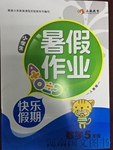题目内容
What ______ lovely surprise it was for the students in Class One to get ______ precious present individually when their class teacher came back from Italy!
A. 不填;a B. 不填;不填 C. the; the D. a; a
D

 永乾教育寒假作业快乐假期延边人民出版社系列答案
永乾教育寒假作业快乐假期延边人民出版社系列答案When I settled in Chicago,my new city seemed so big and unfriendly. Then I had a ___1___ problem and had to go to hospital for a ___2___ examination.
It seemed a small ___3___ compared to the one I was about to face, but things started to go ___4___ right from the beginning. Not having a car for ___5___ the city, I was depending on a couple of buses to get me from A to B. ___6___ I’d left myself plenty of time, soon it was ___7___ that I was going to be late, as I had mistakenly boarded a bus that was taking me in the ___8___ direction.
I ___9___ the bus and stood on the pavement not knowing what to do. I look into the eyes of a ___10___ who was trying to get past me. __11____ instead of moving on, she stopped to ask if I was ___12___. After I explained my ___13___ to her, she pointed to a bus stop across the street, where a bus would take me back into the city to my ___14___. Sitting there waiting, I felt ___15___ that someone had been willing to help. ___16___, hearing a horn (喇叭) nearby, I looked up to see a car with my new friend ___17___ at me to get in. She had returned to offer me a ___18___ to the hospital.
Such unexpected ___19___ from a passer-by was a lovely gift to receive. As I climbed out of the car at the hospital and turned to thank her, she smiled and told me not to lose ___20___, for all things are possible.
|
1. |
|
|
2. |
|
|
3. |
|
|
4. |
|
|
5. |
|
|
6. |
|
|
7. |
|
|
8. |
|
|
9. |
|
|
10. |
|
|
11. |
|
|
12. |
|
|
13. |
|
|
14. |
|
|
15. |
|
|
16. |
|
|
17. |
|
|
18. |
|
|
19. |
|
|
20. |
|